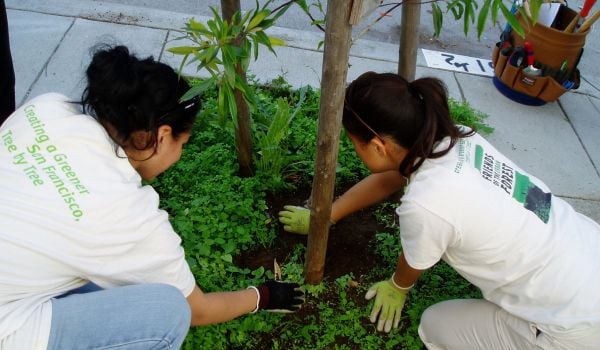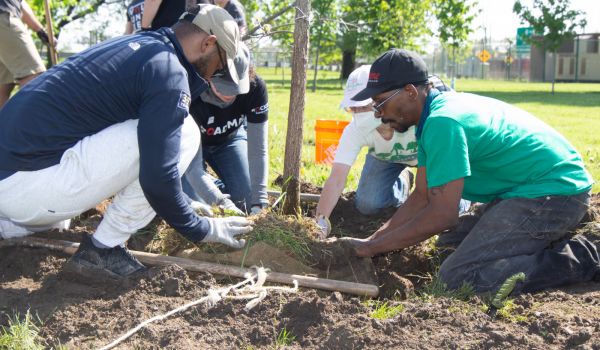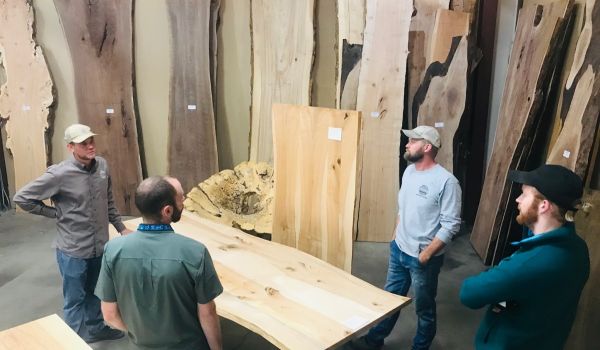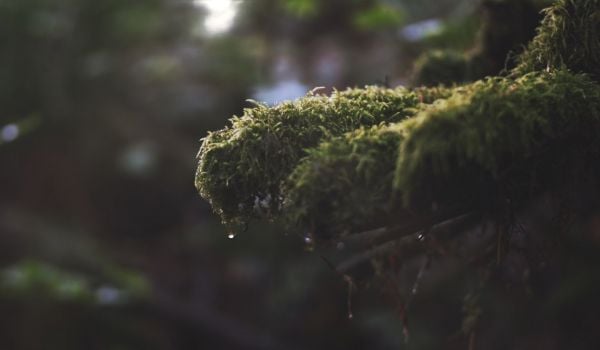This story was originally published by Stateline.
Over the next five years, leaders here in the Emerald City will spend millions in federal dollars to green up neighborhoods that lack trees. As Seattle and the surrounding region deal with more frequent extreme heat events, residents are starting to view trees as more than a luxury.
“The conversation around our urban forest has hit a high degree of urgency because of climate change,” said Jessyn Farrell, director of the city’s Office of Sustainability & Environment. “What has really shifted in the last couple of years is the idea that trees are important climate infrastructure, and trees are really suffering because of climate change.”
As cities across the country brace for more extreme weather, a new federal grant program is helping them use trees as a solution — especially in neighborhoods with little canopy. Urban forests provide shade that significantly lowers temperatures during heat waves; they also absorb stormwater runoff and air pollution. But communities of color and low-income areas are far less likely to share in those benefits.
“This is an incredible investment in the vision of trees being considered true living infrastructure and not just something that’s available for some,” said Beattra Wilson, who leads the U.S. Forest Service’s Urban and Community Forestry Program. “Many communities have been suffering the consequences of not having these investments.”
Last month, Wilson’s agency announced $1 billion in grant awards to 385 cities, nonprofits, tribes and other entities. The funding, passed by Congress in last year’s Inflation Reduction Act, will give chosen communities five years to carry out projects that grow and protect their urban tree cover. Meanwhile, environmental groups such as the Arbor Day Foundation received millions more to administer their own grant programs.
Foresters say the program won’t be as simple as buying $1 billion worth of seedlings. Cities will need to coordinate with nurseries to grow more trees, plan collaboratively with community leaders and build a workforce to get them planted. They also need to spend years caring for the vulnerable saplings to ensure they survive, with regular watering, mulching and pruning. Local leaders say the lengthy timespan for the grants is crucial to bringing all those elements together.
Seattle, for instance, received $12.9 million to plant thousands of trees, maintain existing trees, build partnerships with community leaders and create training opportunities for young people who want to join the green workforce. The money will build on existing programs and partnerships, including plans to build a city-run tree nursery.
Many challenges
Amid the unprecedented momentum to grow the urban canopy, foresters across the country say they still face many challenges. Some leaders have worked in recent years to build relationships in underserved neighborhoods that have long lacked investment, but they acknowledge they need to do more outreach to ensure the projects are real partnerships. For nonprofit groups that plant trees, slow-moving city bureaucracies may be a hurdle to doing more.
Meanwhile, all the new demand for tree planting could overwhelm nurseries if they’re not prepared to grow the varieties needed in the quantities cities want. And some officials say their efforts will require further investment — such as putting arborists on city staffs — when the grant funding expires.
While city leaders are excited to put shovels in the dirt, foresters in Seattle and elsewhere say planting new trees is only a small part of their projects.
“We won’t take on any new project unless we know that tail-end maintenance is funded,” said David Pineda, director of operations and grants with TreePeople, an environmental nonprofit in Southern California. “It’s a lot cheaper to plant, but the aftercare can be costly. It’s crucial because a lot of trees die in the early stages.”
TreePeople will plant or distribute roughly 8,000 trees using the $8 million grant it received from the Forest Service. It also will spend years caring for those trees, train 10 to 20 workers for urban forestry jobs and identify neighborhoods that are most in need of tree cover.
In Washington, D.C., forestry experts say they know where investments are needed.
“It’s hotter on the east side of the city, there’s more consequences to flood events, and there’s higher rates of respiratory illness as well,” said Vince Drader, communications and development director with Casey Trees, a nonprofit based in the capital city. “That’s the area that does not have as much tree canopy.”
Casey Trees was awarded more than $9 million under the federal program, which it will use to plant 10,000 new trees and maintain 30,000 more young trees. The organization also will add 10 members to its crew.
‘A once-in-a-lifetime opportunity’
The work in cities including D.C. builds on the efforts of groups such as American Forests, a nonprofit that released a Tree Equity report in 2021 detailing disparities in urban tree cover. American Forests, which helped lead the push for the federal money, also has partnered with many local governments to help them evaluate their tree distribution.
Joel Pannell, the group’s vice president of urban forest policy, said most of the projects funded by the grant program include community engagement, planning, maintenance, workforce development, training and protection of existing trees.
“It is a mischaracterization to focus so much on just the tree planting,” Pannell said. “It’s easy to say, ‘With X amount of dollars we’re going to plant this many trees.’ You can have a photo-op and get a lot of trees in the ground, but that’s not going to be successful without all the other investments that have to go with that.”
American Forests received $10 million to fund its own forestry work, along with $40 million that it will award to other applicants. Forest Service leaders said the pass-through grants overseen by environmental groups will expand the program’s capacity to process more applications and reach more communities.
In Chicago, local leaders received $15 million to support the Chicago Region Trees Initiative, a partnership of communities and organizations working to expand the area’s urban forest. Lydia Scott, the initiative’s director, said that because the grant does not require applicants to match the funds they receive, many underserved communities will be able to access the money. The grant’s five-year span also will give the partnership time to conduct inventories, plan and get trees in the ground.
The initiative requires the communities it works with to commit to maintaining plantings for at least three years. As more cities and towns receive funding through the grant program, forestry leaders hope to see them bring certified arborists on staff.
“We see this as a once-in-a-lifetime opportunity,” Scott said. “But it could continue to have benefits for us if we get this knowledge in place so it becomes routine for communities to do this kind of work.”
Based in Seattle, Alex Brown covers environmental issues for Stateline. Prior to joining Stateline, Brown wrote for The Chronicle in Lewis County, Washington state.

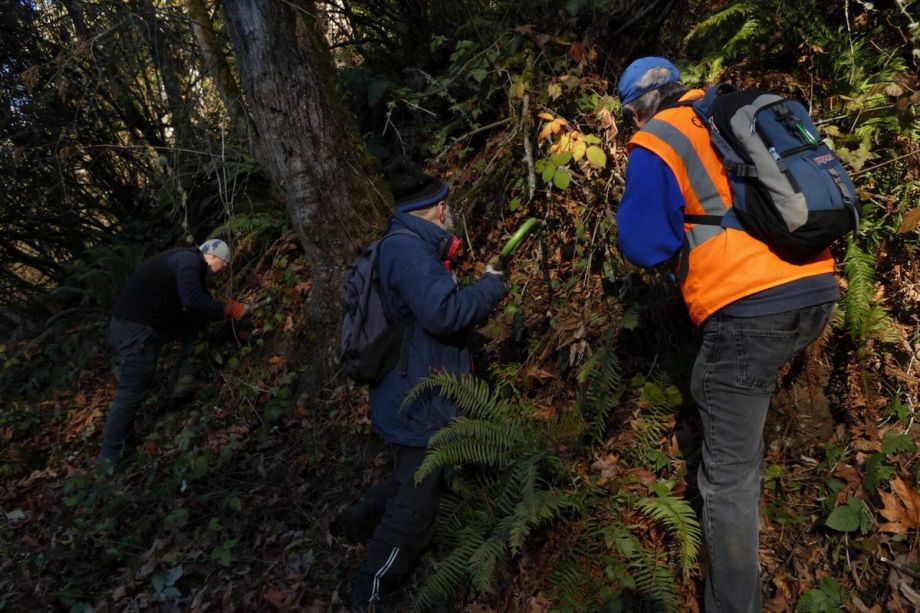
_600_350_80_s_c1.JPEG)
